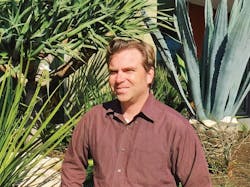Synergistic Storm Water Compliance
Facilities, whether industrial, commercial or construction sites, must comply with many storm water quality standards and permits. The best method to achieve the required standards is to address exceedances synergistically, rather than unilaterally, to achieve favorable and economical compliance outcomes.
Assessing a Hypothetical
An example facility operating under a NPDES industrial permit has multiple metals exposures, including zinc, copper and lead, as well as outdoor materials storage. It also has a heavily used, uncovered loading dock and equipment maintenance area that typically has many petroleum stains resulting in elevated total petroleum hydrocarbon (TPH) discharges. There are also new construction areas with exposed disturbed soils contributing turbidity and total suspended solids (TSS). The entire facility drains to a single-inlet area drain in the parking lot.
How should the facility’s environmental manager approach permit compliance in the most cost-effective manner once all source exposure mitigation measures (i.e., covering material storage areas and routine sweeping) have been employed? By installing a single effective best management practice (BMP) or product at the last line of defense: the drain inlet. A BMP that integrates a product that utilizes an all-natural organic media that can absorb and encapsulate the metals and petroleum could also be in line with corporate sustainability goals.
BMP Selection
The BMP should be a product that will filter out the metals of concern, encapsulate the petroleum and reduce the velocity of the sediment-laden storm water prior to discharging. Traditionally a facility will install multiple BMPs inside the drain inlet (i.e., filter fabric for sediment, an inline filter for metals removal and a petroleum-absorbing sponge). This approach requires three different media to accomplish the desired water quality goal.
But how will the compliance sample be taken downstream of these media when they are already in the inlet blocking access to the filtered flow? An inline automated sampler could be installed, but they are expensive and are not appropriate for all types of sample collection methods. Additionally, the maintenance costs of three different media can be excessive, especially when factoring in the need to remove the drain inlet grate each time.
Aboveground Filter Benefits
A single aboveground BMP that addresses the TPH, TSS and metals would be ideal for this facility. It is important to identify a product that can handle traffic without losing its effectiveness, so consider a product that utilizes a high-tenacity geotextile that is designed to withstand heavy vehicle traffic, and can be safely secured to the asphalt or concrete.
The benefits of the aboveground filter method is that maintenance of the inlet protection is reduced by not having to lift and remove a heavy grate every time the filters need to be maintained or replaced. Additionally, collecting the compliance sample is much easier after the berm, as the inlet is accessible at the surface. The area around the berm filter will require sweeping, whether it is manual or by a mechanical sweeper after rain events to keep the facility clean.
Ultimately, when evaluating a facility for water quality improvements, it is best to think synergistically in BMP approaches and not by individual constituents. Hiring a storm water professional intimately familiar with the governing storm water regulations and willing to employ emerging methodologies can help save on annual budget costs in maintenance and violations.


